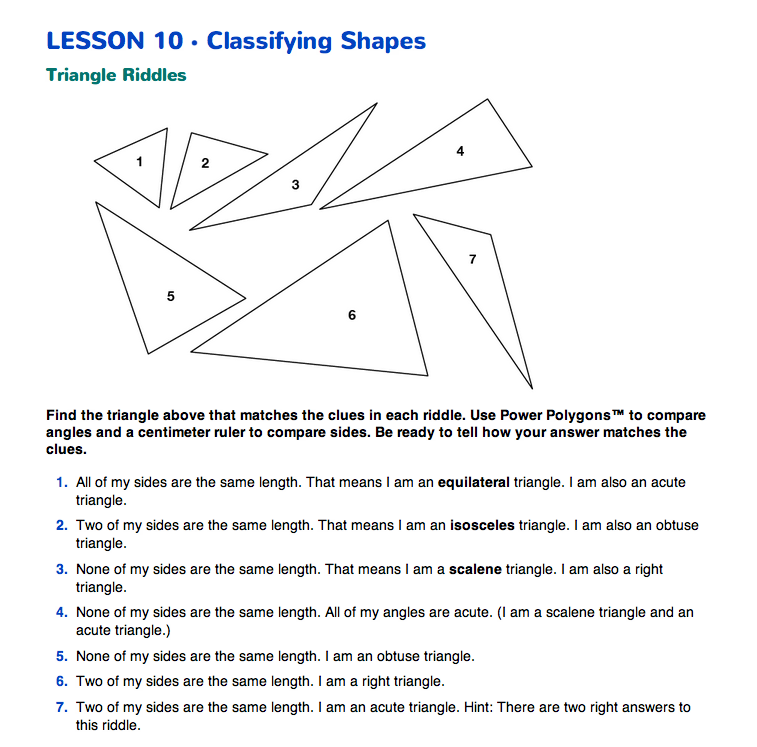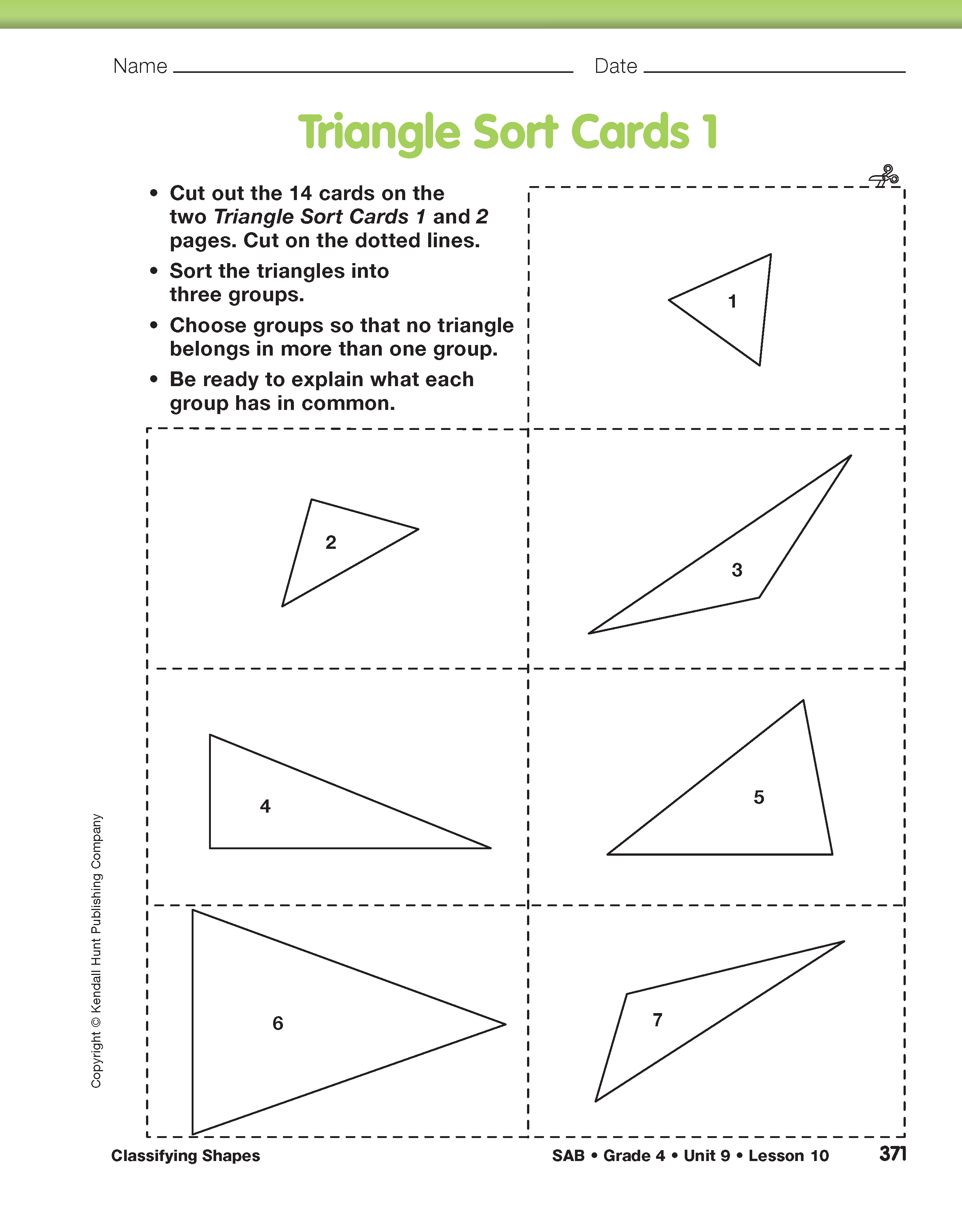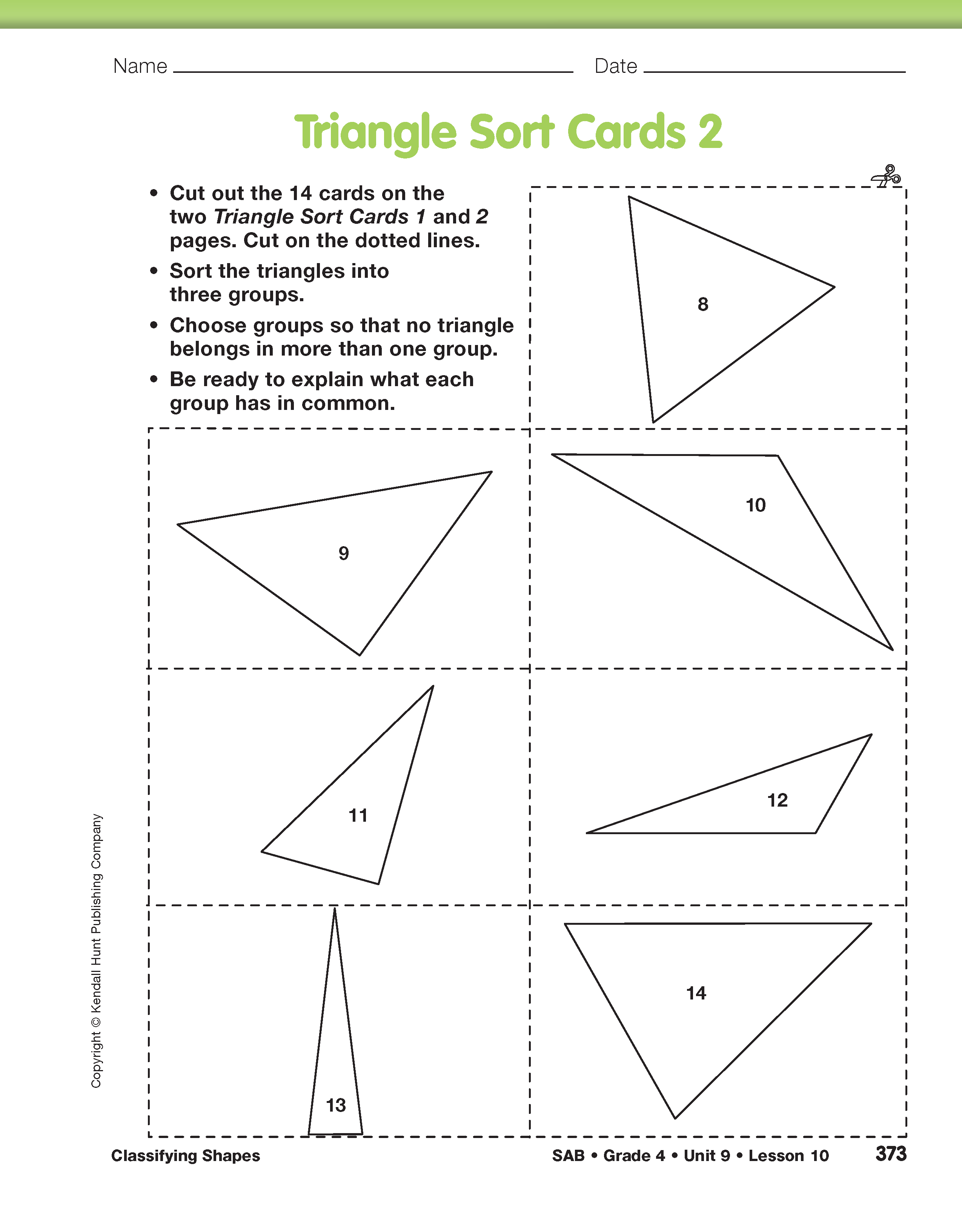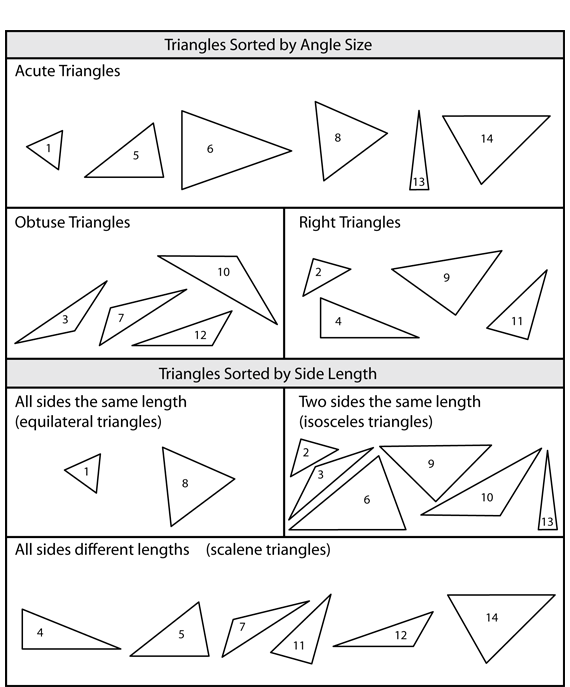Classifying Shapes
Est. Class Sessions: 2–3Developing the Lesson
Part 1. Classifying Triangles
Compare Triangles. Begin by asking students to look carefully at Triangles 2 and 6 that they cut out from the Triangle Sort Cards 1 pages in the Student Activity Book.
Ask:
Students may note that the size (area) of the two triangles is different. This is true but hard to measure with the tools available. Encourage students to focus on the properties of the triangle (sides, angles, and lines of symmetry).
As needed, compare a second pair of triangles:
Sort Triangles. Continue by asking students to work with a partner to sort one set of the 14 triangles on the Triangle Sort Cards 1 and 2 pages.
Tell students:
Talk with students as they work. Let students develop their own sorting process as much as possible. Give them time to study the triangles. Encourage them to look for differences and similarities using the sides and angles of the Power Polygons™ to make comparisons. The right angles and sides of the squares will be particularly useful. Focus their attention on the parts of the triangles (angles, sides, and lines of symmetry) that they studied in Lesson 9 as opposed to the size of the whole triangle or its orientation on the page.
If a pair of students has trouble getting started organizing three groups, ask questions similar to those below as necessary. Encourage them to concentrate on one characteristic of triangles such as angle size, side length, or lines of symmetry.
Ask:
As groups finish sorting the triangles, note how different groups chose to classify them. Two possible classification schemes are shown in Figure 1. Choose a group of students who sorted by angle size and a group that sorted by side length to show the class their groups using displays of the Triangle Sort Cards. Ask them to explain how they chose their groups and made their decisions of which triangles to include in each group. Ask the class to challenge their choices or to ask clarifying questions.
If no group sorted by side length, ask them to work with their partners to answer the questions below and then sort the triangles.
Ask:
Solve Triangle Riddles. Ask students to look at the seven triangles at the top of the Triangle Riddles section of the Classifying Shapes pages in the Student Guide. Have students work in pairs to answer the riddles in Questions 1–7. Students can use their centimeter ruler to compare the lengths of the sides and the Power Polygons™ to help them decide whether an angle is acute, right, or obtuse. The riddles help students understand that the same triangle can have two different names. This activity introduces the names of triangles that are based on side length: equilateral, isosceles, and scalene. See Figure 1. As students work, ask them to explain how they know their answers to each riddle are correct.
Play Mystery Properties. Tell students they are going to play a new version of the Shape Finder game they played in Lesson 9. Call this game Mystery Properties. Display the Sorting Polygons page from the Student Activity Book.
Tell students the rules:
Begin placing triangles as shown in Figure 2. Do not yet write the property names over Box A and Box B. Use displays of the triangles in the Triangle Sort Cards in the Student Activity Book. The triangles in Box A are right triangles. The triangles in Box B have two sides equal (isosceles triangles).
Discuss the properties students name for each shape. Encourage students to use their own words to describe the properties. The important idea is that shapes can have more than one name based on their properties. Students may say, “Two sides are the same for the triangles in B” and “Has a square corner for A.” During discussion, model using mathematical terms.
For example, ask:
Play additional games. Sample games are shown in Figures 3 and 4. After leading two or three games, ask volunteers to serve as the leader, choose two mystery properties, and place triangles on the board for the class to name.
- In Figure 3, A has right triangles and B has obtuse triangles. Note that the overlapping section of A and B is empty.
- In Figure 4, A has equilateral triangles and B has triangles with at least two equal sides (isosceles triangles). Note that all equilateral triangles are also isosceles triangles, since a triangle with three equal sides will also have two equal sides.





















